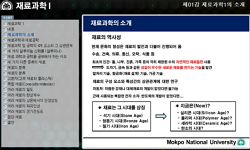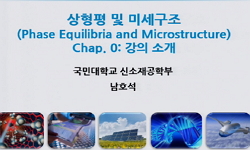This study analyzed the microstructure of ring-pommel swords, excavated from Ancient Tombs, Hadae, Ulsan and examined their production technique, using non-destructive testing and a metallurgical method. The results confirmed that the five ring-pommel...
http://chineseinput.net/에서 pinyin(병음)방식으로 중국어를 변환할 수 있습니다.
변환된 중국어를 복사하여 사용하시면 됩니다.
- 中文 을 입력하시려면 zhongwen을 입력하시고 space를누르시면됩니다.
- 北京 을 입력하시려면 beijing을 입력하시고 space를 누르시면 됩니다.

울산 하대고분 출토 민고리자루칼의 재질 특성과 환두부 제작 방법 = Metallurgical Characteristics and Manufacturing Techniques of Ring-Pommel Swords Excavated from Ancient Tombs in Hadae, Ulsan
한글로보기https://www.riss.kr/link?id=A106911769
- 저자
- 발행기관
- 학술지명
- 권호사항
-
발행연도
2020
-
작성언어
Korean
- 주제어
-
등재정보
KCI등재
-
자료형태
학술저널
-
수록면
197-212(16쪽)
-
KCI 피인용횟수
0
- 제공처
-
0
상세조회 -
0
다운로드
부가정보
다국어 초록 (Multilingual Abstract)
This study analyzed the microstructure of ring-pommel swords, excavated from Ancient Tombs, Hadae, Ulsan and examined their production technique, using non-destructive testing and a metallurgical method. The results confirmed that the five ring-pommel swords, unearthed in Ancient Tombs, Hadae, Ulsan, as identified by radiographic non-destructive testing, had been solely manufactured using iron, through forging based on the single-piece technique. Furthermore, these results were compared with previous studies, and the manufacturing techniques of single-piece ring-pommel swords were categorized into three types: pure iron - changing the shape, pure iron - changing the shape - carburization, and steel - changing the shape - quenching. The ring-pommels of four swords had around 0.7% of carbon content, which is as much as for eutectoid steel and higher than for other parts of these swords, such as the backs of their blades and handles. The weapon function of a small ring-pommel sword, under 60cm in length, was maximized by quenching focusing on its blade. Conversely, the martensite quenching structure was not observed in four ring-pommel swords shorter than 75cm. In other words, the same types of single-piece ring-pommel swords(late in 2C∼early in 4C) were unearthed from Ancient Tombs, Hadae, and the group who has manufactured these swords is presumed to have limited their effectiveness, functionally depending on purposes, through an iron-making process and heat-treatment techniques.
국문 초록 (Abstract)
울산 하대유적에서 출토된 민고리자루칼을 방사선 비파괴조사와 미세조직 분석으로 환두 부의 제작 방법과 재질 특성을 살펴보았다. 방사선 비파괴 조사법으로(X-ray, CT) 내부 구조를 확인한...
울산 하대유적에서 출토된 민고리자루칼을 방사선 비파괴조사와 미세조직 분석으로 환두 부의 제작 방법과 재질 특성을 살펴보았다. 방사선 비파괴 조사법으로(X-ray, CT) 내부 구조를 확인한 결과, 제작 방법의 기본형식은 철 단일 소재로 칼 끝부터 환두부까지 일체형으로 제작한 단조품임을 확인하였다. 또한 미세조직 분석을 통해 살펴 본 제작기술은 ‘순철-형태가공, 순철-형태가공-침탄, 강-형태가공-담금질’의 세 가지 유형으로 분류할 수 있었다. 민고리자루칼 5점 중 4점의 환두부는 약 0.7% 내외인 공석강 정도의 탄소 함량을 가진다. 특히 환두부에서는 손잡이보다 증가된 탄소함량을 보이는데, 이는 손잡이 끝 부분을 세장한 형태로 만들고 둥글게 구부리는 과정에서 인성을 부여하기 위한 침탄 처리의 결과로 추정된다. 길이 60 cm 이하의 민고리자루칼1점은 날 부위에 집중시킨 담금질을 통해 강한 인성을 부여하여 무기로서의 용도를 극대화시켰다.
반면 75 cm를 넘는 4점의 날 부위에서는 담금질 조직인 마르텐사이트가 관찰되지 않았다. 하지만 칼등 대비 날 부위의 탄소함량 증가나 결정립의 미세화는 실용기로서 사용이 가능했음을 보여준다. 2C말에서 4C초로 편년되는 울산 하대고분군 출토 민고리자루칼은 단조기술을 통해 일체형으로 제작하였으며, 사용 목적에 따라 제강, 열처리 기술을 적용하여 칼이 가지는 용도의 효과를 극대화시켜 제작하였다.
참고문헌 (Reference)
1 남수진, "오산 수청동유적 출토 환두대도의 금속학적 연구" 공주대학교 대학원 2013
2 Kim, S. K., "Study on iron‐making and manufacturing technology of iron swords with ring pommel excavated in Ipbuk‐dong. Suwon" 579-588, 2016
3 Schumann, H., "Metallografie" Hakmunsa 292-, 1996
4 Cho, H. K., "Manufacturing technology of iron swords in the midwestern Korea from 2nd to 6th century AD" Kongju National University 2015
5 Choi, J. T., "Iron technologies of the Three Kingdoms Period in Korea" Seoul National University 322-, 2001
6 National Research Institute of Cultural Heritage, "Dictionary of Korean archaeology" Hakyeonmunhwasa 61-, 2001
7 Pusan National University Museum, "Ancient tomb(1):Hadae" Ulsan city 8-11, 1997
8 Lee, B. L., "A study on the swords with a ring pommel of the third to fifth century in the Guem River area" Chonbuk National University 2008
9 Lee, S. S., "A study of sword with a ring pommel of the Gaya" Hongik University 2008
10 Lee, Y. B., "A study of production techniques of the handles of swords with round pommel excavated from Jeollabuk-do made in before 6 century" Kongju National University 2009
1 남수진, "오산 수청동유적 출토 환두대도의 금속학적 연구" 공주대학교 대학원 2013
2 Kim, S. K., "Study on iron‐making and manufacturing technology of iron swords with ring pommel excavated in Ipbuk‐dong. Suwon" 579-588, 2016
3 Schumann, H., "Metallografie" Hakmunsa 292-, 1996
4 Cho, H. K., "Manufacturing technology of iron swords in the midwestern Korea from 2nd to 6th century AD" Kongju National University 2015
5 Choi, J. T., "Iron technologies of the Three Kingdoms Period in Korea" Seoul National University 322-, 2001
6 National Research Institute of Cultural Heritage, "Dictionary of Korean archaeology" Hakyeonmunhwasa 61-, 2001
7 Pusan National University Museum, "Ancient tomb(1):Hadae" Ulsan city 8-11, 1997
8 Lee, B. L., "A study on the swords with a ring pommel of the third to fifth century in the Guem River area" Chonbuk National University 2008
9 Lee, S. S., "A study of sword with a ring pommel of the Gaya" Hongik University 2008
10 Lee, Y. B., "A study of production techniques of the handles of swords with round pommel excavated from Jeollabuk-do made in before 6 century" Kongju National University 2009
동일학술지(권/호) 다른 논문
-
- 한국문화재보존과학회
- 이가영
- 2020
- KCI등재
-
강원 영서지역 춘천 고성리 가마터 출토 백자 및 태토 원료의 상관관계 연구
- 한국문화재보존과학회
- 이병훈
- 2020
- KCI등재
-
- 한국문화재보존과학회
- 임세연
- 2020
- KCI등재
-
- 한국문화재보존과학회
- 이민혜
- 2020
- KCI등재
분석정보
인용정보 인용지수 설명보기
학술지 이력
| 연월일 | 이력구분 | 이력상세 | 등재구분 |
|---|---|---|---|
| 2026 | 평가예정 | 재인증평가 신청대상 (재인증) | |
| 2020-01-01 | 평가 | 등재학술지 유지 (재인증) |  |
| 2017-01-01 | 평가 | 등재학술지 유지 (계속평가) |  |
| 2013-01-01 | 평가 | 등재학술지 유지 (등재유지) |  |
| 2010-01-01 | 평가 | 등재학술지 선정 (등재후보2차) |  |
| 2009-01-01 | 평가 | 등재후보 1차 PASS (등재후보1차) |  |
| 2007-01-01 | 평가 | 등재후보학술지 선정 (신규평가) |  |
학술지 인용정보
| 기준연도 | WOS-KCI 통합IF(2년) | KCIF(2년) | KCIF(3년) |
|---|---|---|---|
| 2016 | 0.52 | 0.52 | 0.47 |
| KCIF(4년) | KCIF(5년) | 중심성지수(3년) | 즉시성지수 |
| 0.5 | 0.47 | 0.455 | 0.1 |





 ScienceON
ScienceON eArticle
eArticle





